Hyundai i10 vs Mitsubishi Eclipse Cross – Differences & prices compared
Compare performance, boot space, consumption and price in one view.
Find out now: which car is the better choice for you – Hyundai i10 or Mitsubishi Eclipse Cross?
The Hyundai i10 (Hatchback) comes with a Petrol engine and Manuel or Automatic transmission. In comparison, the Mitsubishi Eclipse Cross (SUV) features a Plugin Hybrid engine with transmission.
When it comes to boot capacity, the Hyundai i10 offers 252 L, while the Mitsubishi Eclipse Cross provides 359 L – depending on how much space you need. If you’re looking for more power, decide whether the 90 HP of the Hyundai i10 or the 188 HP of the Mitsubishi Eclipse Cross suits your needs better.
In terms of consumption, the values are 4.90 L per 100 km for the Hyundai i10, and 2 L for the Mitsubishi Eclipse Cross.
Price-wise, the Hyundai i10 starts at 14600 £, while the Mitsubishi Eclipse Cross is available from 36000 £. Compare all the details and find out which model fits your lifestyle best!
Hyundai i10
The Hyundai i10 impresses with its compact design, making it an ideal choice for navigating through busy urban environments. Its interior is surprisingly spacious, offering drivers and passengers comfort beyond what one might expect from a city car. The model combines efficiency and practicality, making it an attractive option for those seeking both economy and functionality in their daily commute.
details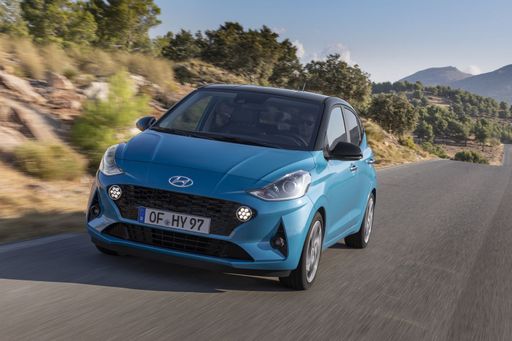 @ hyundai.news
@ hyundai.news
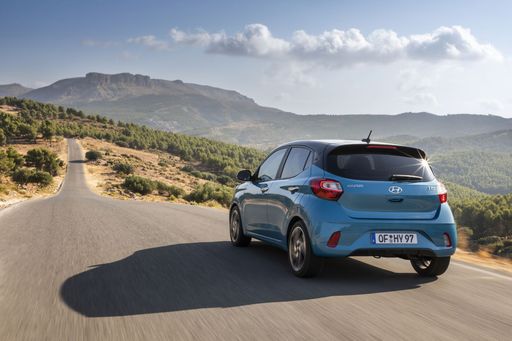 @ hyundai.news
@ hyundai.news
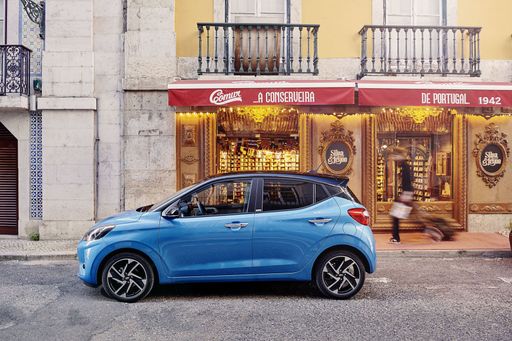 @ hyundai.news
@ hyundai.news
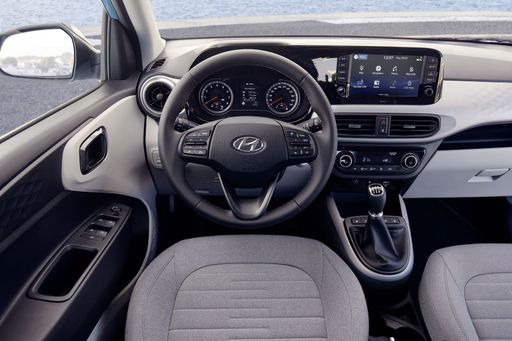 @ hyundai.news
@ hyundai.news
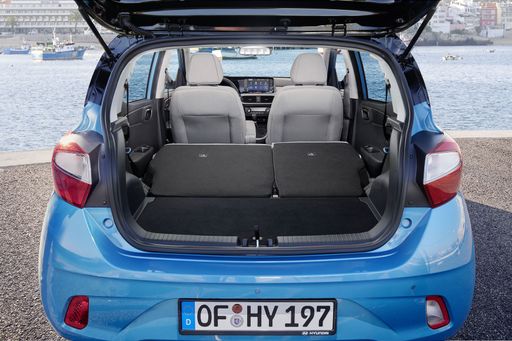 @ hyundai.news
@ hyundai.news
Mitsubishi Eclipse Cross
The Mitsubishi Eclipse Cross presents a sleek fusion of dynamic design and versatile functionality, perfect for urban adventures and weekend getaways alike. Its elegant lines and bold front grille make a strong statement on the road, while its well-appointed interior offers a comfortable and connected driving experience. With advanced safety features and intuitive technology, the Eclipse Cross ensures drivers feel secure and in control, whether navigating city streets or scenic routes.
details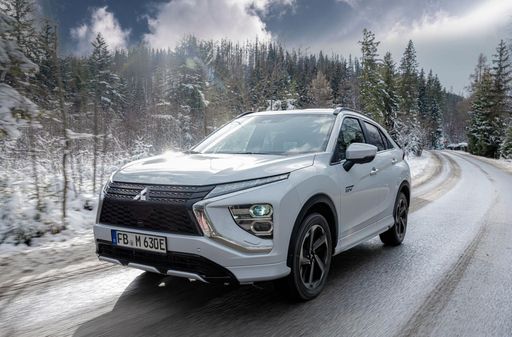 @ Mitsubishi Motos
@ Mitsubishi Motos
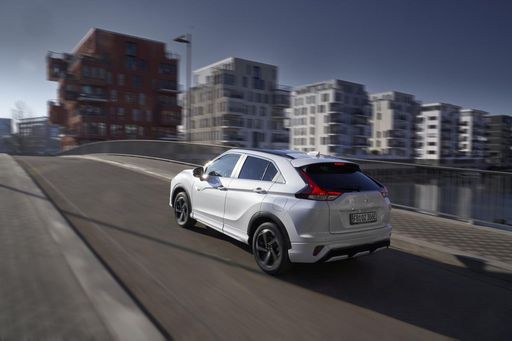 @ Mitsubishi Motos
@ Mitsubishi Motos
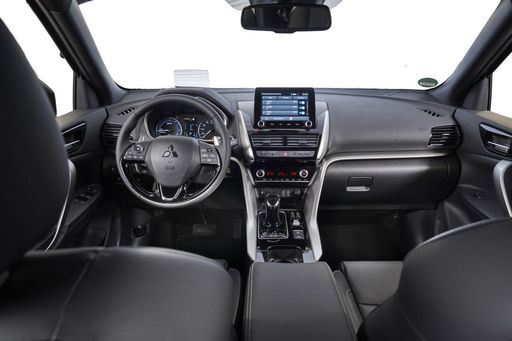 @ Mitsubishi Motos
@ Mitsubishi Motos

|

|
|
|
|
Costs and Consumption |
|
|---|---|
|
Price
14600 - 19000 £
|
Price
36000 - 41800 £
|
|
Consumption L/100km
4.9 - 5.5 L
|
Consumption L/100km
2 L
|
|
Consumption kWh/100km
-
|
Consumption kWh/100km
-
|
|
Electric Range
-
|
Electric Range
45 km
|
|
Battery Capacity
-
|
Battery Capacity
-
|
|
co2
110 - 124 g/km
|
co2
46 g/km
|
|
Fuel tank capacity
36 L
|
Fuel tank capacity
43 L
|
Dimensions and Body |
|
|---|---|
|
Body Type
Hatchback
|
Body Type
SUV
|
|
Seats
4 - 5
|
Seats
5
|
|
Doors
5
|
Doors
5
|
|
Curb weight
996 - 1099 kg
|
Curb weight
1985 - 2052 kg
|
|
Trunk capacity
252 L
|
Trunk capacity
359 L
|
|
Length
3670 - 3675 mm
|
Length
4545 mm
|
|
Width
1680 mm
|
Width
1805 mm
|
|
Height
1480 - 1483 mm
|
Height
1685 mm
|
|
Payload
344 - 423 kg
|
Payload
373 - 440 kg
|
Engine and Performance |
|
|---|---|
|
Engine Type
Petrol
|
Engine Type
Plugin Hybrid
|
|
Transmission
Manuel, Automatic
|
Transmission
-
|
|
Transmission Detail
Manual Gearbox, Automated Manual
|
Transmission Detail
-
|
|
Drive Type
Front-Wheel Drive
|
Drive Type
All-Wheel Drive
|
|
Power HP
63 - 90 HP
|
Power HP
188 HP
|
|
Acceleration 0-100km/h
11.4 - 18.4 s
|
Acceleration 0-100km/h
10.90 s
|
|
Max Speed
143 - 175 km/h
|
Max Speed
162 km/h
|
|
Torque
93 - 172 Nm
|
Torque
-
|
|
Number of Cylinders
3 - 4
|
Number of Cylinders
4
|
|
Power kW
46 - 66 kW
|
Power kW
138 kW
|
|
Engine capacity
998 - 1197 cm3
|
Engine capacity
2360 cm3
|
General |
|
|---|---|
|
Model Year
2024
|
Model Year
2021 - 2022
|
|
CO2 Efficiency Class
C, D
|
CO2 Efficiency Class
B
|
|
Brand
Hyundai
|
Brand
Mitsubishi
|
Hyundai i10
Introduction to the Hyundai i10
The Hyundai i10 has consistently proven to be a dependable and stylish companion for urban driving. Known for its compact design and efficiency, this hatchback offers a perfect blend of modern aesthetics and practicality, making it a popular choice for city dwellers and small families alike.
Performance and Efficiency
The Hyundai i10 is available with both manual and automatic transmissions, catering to various driving preferences. Engine power ranges from 63 to 90 PS, providing a versatile driving experience for both novice and seasoned drivers. The fuel consumption varies between an impressive 4.9 to 5.4 litres per 100 kilometres, fitting for those looking to minimise fuel costs while also reducing their carbon footprint.
Engine and Transmission
Equipped with a choice of 1.0-litre or 1.2-litre engines, the i10 offers up to 172 Nm of torque, ensuring lively performance. The models feature front-wheel-drive configurations, allowing for smooth handling and reliable road performance. The car excels in city driving but is equally capable on longer journeys.
Interior and Comfort
Despite its compact size, the Hyundai i10 does not compromise on interior space and comfort. It accommodates four to five occupants comfortably, offering sufficient legroom and headroom. Its flexible seating arrangement and a 252-litre boot make it ideal for both quick trips and weekend getaways.
Safety and Technology
Safety remains a priority with Hyundai, and the i10 is no exception. It comes equipped with multiple airbags, stability control, and advanced braking systems. Technology-wise, the i10 features a user-friendly infotainment system with smartphone connectivity, ensuring a pleasant and connected drive.
Design and Style
The Hyundai i10’s design is both modern and sleek, making it stand out in the compact hatchback segment. With a length ranging from 3670 to 3675 mm, a width of 1680 mm, and a height of 1480 to 1483 mm, the i10 strikes a perfect balance between style and functionality.
Affordable Pricing and Value
The i10 is available in several trims including the Select, N Line, and Prime, among others, with prices ranging from €16,990 to €22,190. Considering its features and low running costs — with monthly expenses estimated between €694 to €793 — the Hyundai i10 offers substantial value for those seeking an economical yet stylish hatchback.
Conclusion
The Hyundai i10 combines efficiency, modern design, and practicality in a compact package. Whether you are seeking a reliable city car or an economical daily driver, the Hyundai i10 is a strong contender worth considering in the compact car market of 2024.
Mitsubishi Eclipse Cross
Unveiling the Mitsubishi Eclipse Cross: A Pioneer in Innovation
The Mitsubishi Eclipse Cross has captivated the automotive world since its introduction. This SUV merges the heritage of Mitsubishi's Eclipse sports coupe with the robust aesthetics of a modern crossover, creating a vehicle that stands out both on urban roads and open highways. Let's delve into the innovative features and technical details that define this remarkable vehicle.
Powerful Hybrid Performance
At the heart of the Mitsubishi Eclipse Cross is its cutting-edge plug-in hybrid engine. With a power output of 188 PS (138 kW), this hybrid marvel combines a traditional 2.4-litre petrol engine with an advanced electric motor, delivering an impressive fuel economy of just 2 litres per 100 km. Not only does it offer optimal performance, but it also commits to eco-friendliness with a CO2 emission rated at a mere 46 g/km.
All-Wheel Drive for Unmatched Control
The Eclipse Cross comes equipped with an all-wheel-drive system, ensuring traction and stability across various terrains. This is particularly beneficial for drivers who venture beyond the smooth highways, providing confidence and control whether you're tackling slippery city streets or rugged countryside trails.
Design and Comfort: A Fusion of Style and Practicality
The striking design of the Mitsubishi Eclipse Cross is a fusion of style and functionality. Its dimensions, 4545 mm in length, 1805 mm in width, and 1685 mm in height, contribute to a spacious interior without compromising on an elegant silhouette. This SUV comfortably seats five passengers and boasts a generous boot space of 359 litres, ideal for family getaways or adventure trips.
Technological Advancements for Modern Drivers
Mitsubishi has integrated several technological advancements into the Eclipse Cross to enhance driving experience. The model offers an electric range of 45 km, perfect for daily commutes or short journeys without engaging the conventional engine. Additionally, its user-friendly infotainment system ensures connectivity and entertainment on the go.
Safety Features: Protecting What Matters Most
Safety is paramount in the design of the Eclipse Cross. It includes a selection of contemporary safety features to protect both passengers and pedestrians. With a CO2 efficiency class rated at B, it not only aims to safeguard its passengers with advanced collision mitigation systems but also to ensure a greener and more sustainable driving experience.
Value for Money: The Perfect Investment
Positioned with a price range between €41,990 and €48,990, the Mitsubishi Eclipse Cross offers substantial value considering its hybrid technology and comprehensive feature set. Additionally, with monthly costs ranging from €1,165 to €1,258 and cost per km between 46.6 and 50.3 cents, it is an economically sound choice for eco-conscious drivers looking for an efficient and reliable vehicle.
In conclusion, with its blend of hybrid power, all-wheel-drive capability, and a focus on innovation and safety, the Mitsubishi Eclipse Cross is an ideal candidate for those seeking a versatile and efficient SUV. Whether you're navigating city streets or cruising countryside roads, the Eclipse Cross promises a drive that is both exhilarating and responsible.
Which drive types are available for the Hyundai i10?
Available as Front-Wheel Drive.
The prices and data displayed are estimates based on German list prices and may vary by country. This information is not legally binding.
